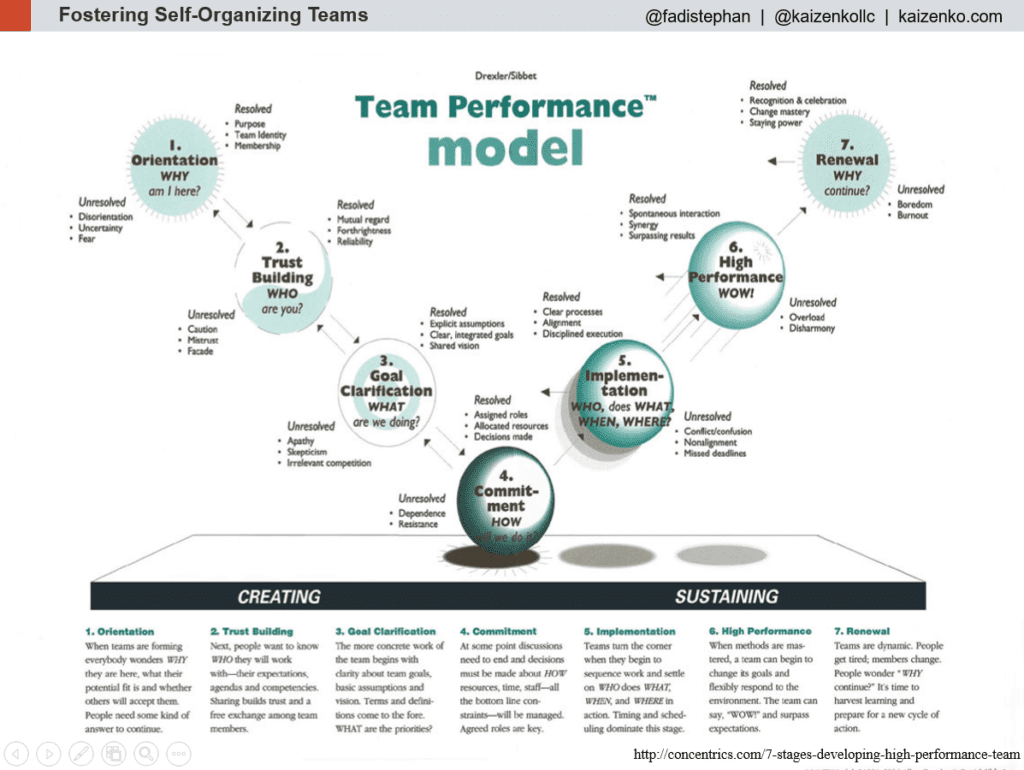

During this stage of a new team's life, it will need to do research and develop clear understanding of the job that is required, as well as generate agreements about goals and specific deliverables." "What are we doing?" is a more specific question than the larger question of purpose asked during Orientation. More often, they are given a broad mandate and nee to make choices about how they will pursue that mandate and translate it into goals. Sometimes teams have precise charters that specify what they are responsible for accomplishing. When a team is Blocked at stage 2, members may show. Keys to when trust challenges are resolved: This is why the key question is "Who are you?" An unstated aspect of this question is wondering, "What will you expect from me?" For a team to work well, you need to accept that you can depend on team members to work together to accomplish the team's purpose." In the beginning of a new team's live, trust involves some risk and uncertainty about dealing with strangers. Because team members have to depend on each other to be successful, trust is essential in direct relation to how much cooperation is needed to get the job done. "Trust is a measure of your willingness to work together with others for something important. Keys to when Orientation challenges are resolved:īlocked teams at stage 1 Orientation may show. As a team leader it is important to provide time and space for people to answer these internal questions themselves." that is why these concerns are illustrated as occurring in your imagination at an intuitive level. In a new team, these are individual concerns, because the group is only potentially a team. you need to understand the reason the team exist, what will be expected of you and how you will benefit from membership. "Orientation is about understanding the purpose of a team and assessing what it will mean to be a member. Introducing the Team Performance Model by Drexler and Sibbet Is it time to level up in your mental model of team dynamics? Are you ready for a richer more functional model? It was created in 1966 and has become the most popular model for describing team behavior. Many of you have all heard of the Tuckman model of team dynamics (Forming, Storming, Norming, Performing).


 0 kommentar(er)
0 kommentar(er)
